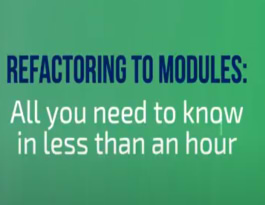Using GoLang Concurrency & Asynchronous Processing with CI/CD @ GoSF Meetup
November 10, 2021
< 1 min read
Using GoLang Concurrency & Asynchronous Processing with CI/CD
Concurrency is one Go’s most prominent features. So how did we incorporate its usage when we needed to significantly reduce the 8 hour compile time of our complex Kubernetes platform which consisted of 25 individual components? What about the multiple CI/CD pipelines we were triggering subsequently during this process? In this talk, Sudhindra will share the process and approach his team took to work through these uncertainties, and how incorporated Asynchronous Processing while leveraging Golang concurrency. He will also showcase concepts in Go Concurrency from waitGroups to concurrency pipelines. Using GoLang Concurrency & Asynchronous Processing with CI/CD






